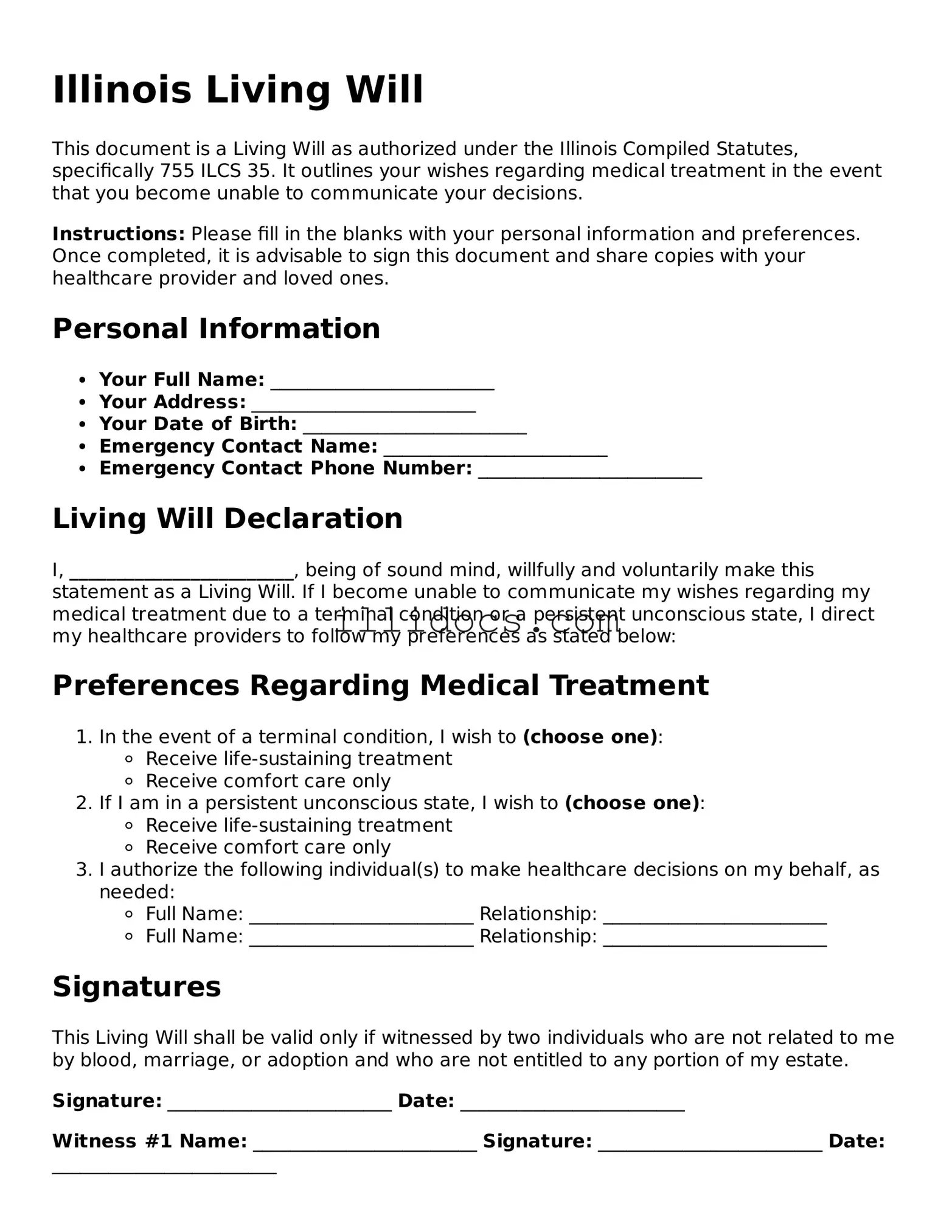What is a Living Will in Illinois?
A Living Will is a legal document that allows you to express your wishes regarding medical treatment in the event that you become unable to communicate those wishes yourself. In Illinois, it specifically addresses your preferences for life-sustaining treatments and procedures if you are diagnosed with a terminal condition or are in a state of permanent unconsciousness. This document helps guide healthcare providers and loved ones in making decisions that align with your values and desires.
How do I create a Living Will in Illinois?
To create a Living Will in Illinois, you need to complete the Illinois Living Will form. This form can be obtained online or from healthcare providers. You must fill it out, indicating your preferences regarding medical treatments. After completing the form, you should sign it in the presence of two witnesses or a notary public. The witnesses cannot be related to you or have any financial interest in your estate. Once signed, keep the original document in a safe place and share copies with your healthcare providers and family members.
Can I change or revoke my Living Will?
Yes, you can change or revoke your Living Will at any time while you are still competent. To revoke it, simply destroy the original document and any copies. You can also create a new Living Will that clearly states your current wishes. It is important to inform your healthcare providers and family members about any changes you make to ensure they are aware of your updated preferences.
What happens if I do not have a Living Will?
If you do not have a Living Will and become unable to communicate your medical preferences, healthcare providers will follow standard medical protocols. Decisions about your care may be made by your family members or legal representatives, but these individuals may not be aware of your specific wishes. This can lead to confusion and potential conflicts during a difficult time. Having a Living Will can provide clarity and ensure that your desires are respected.
